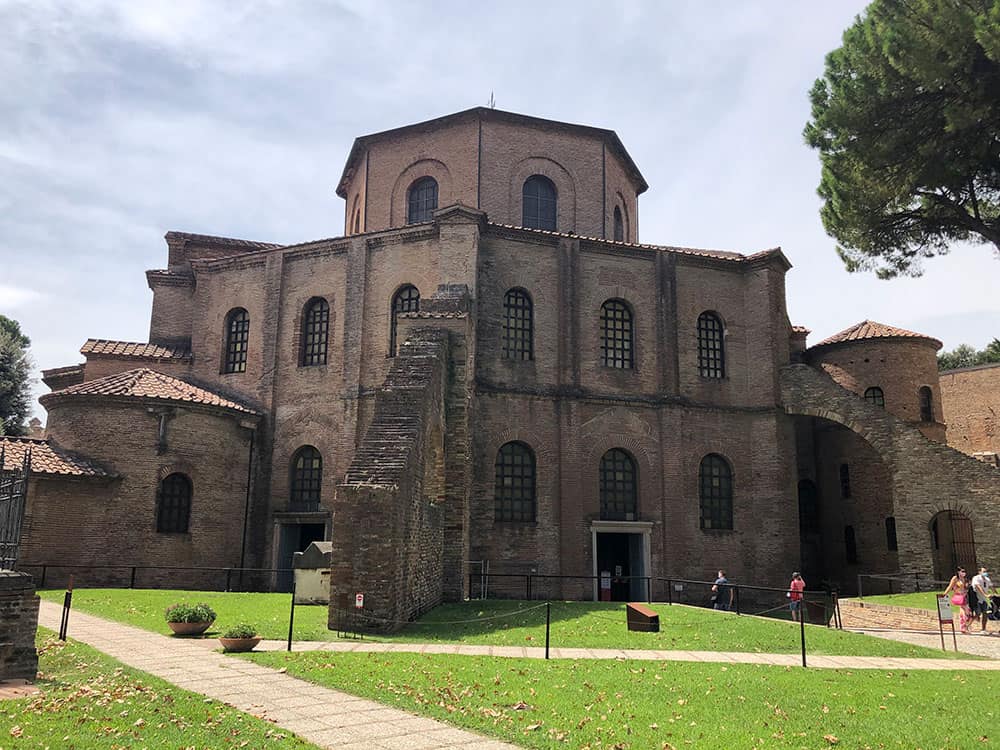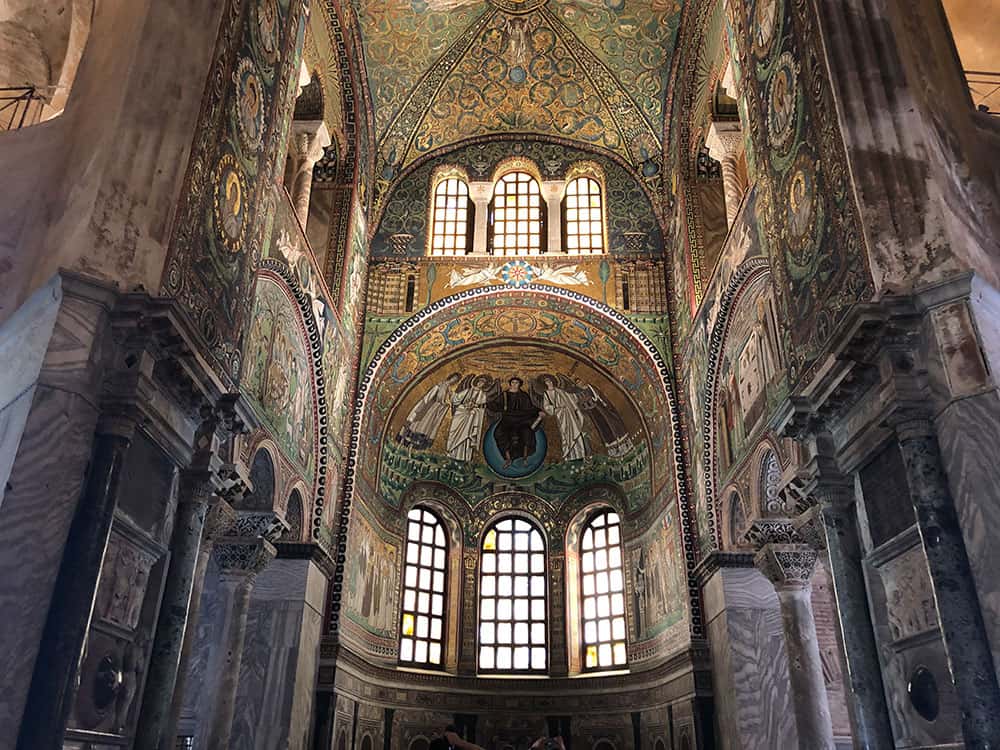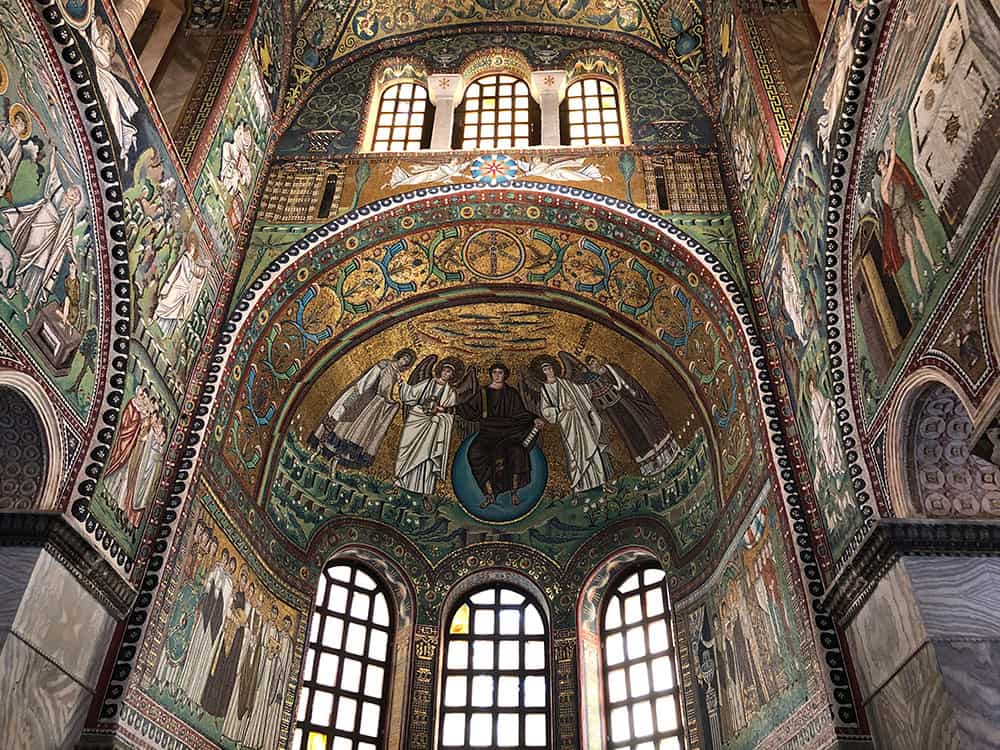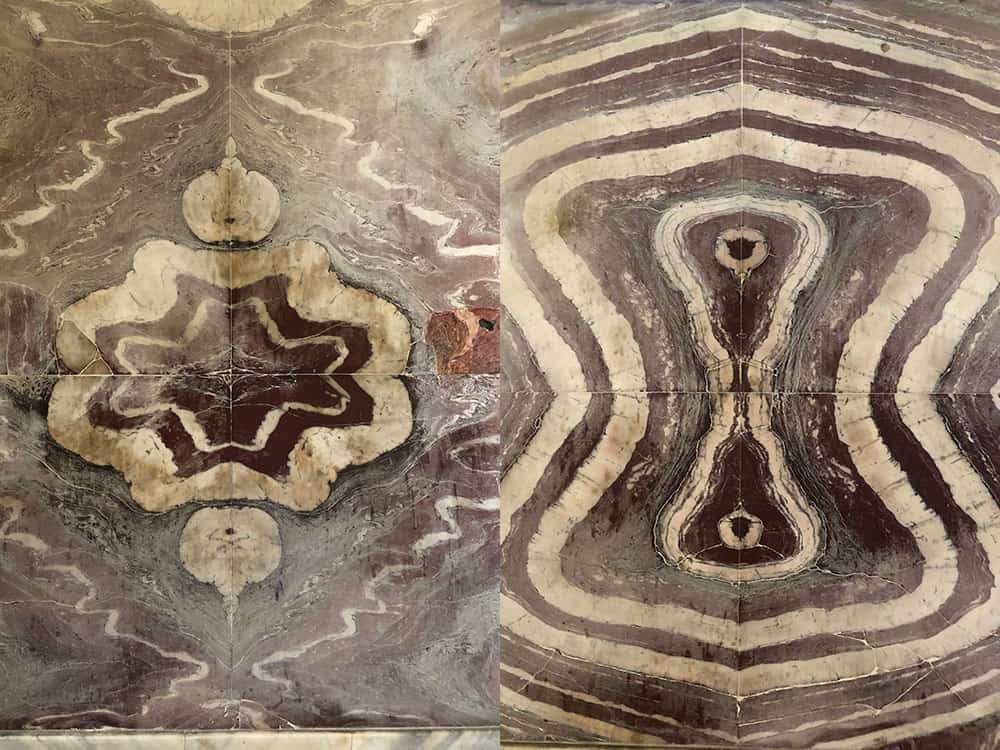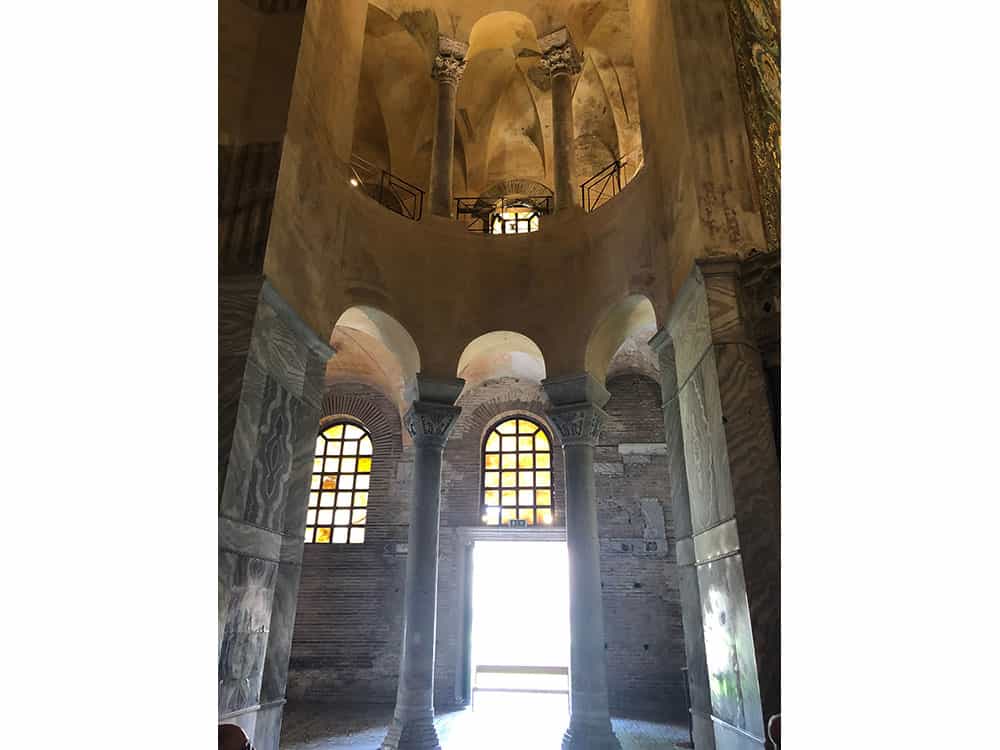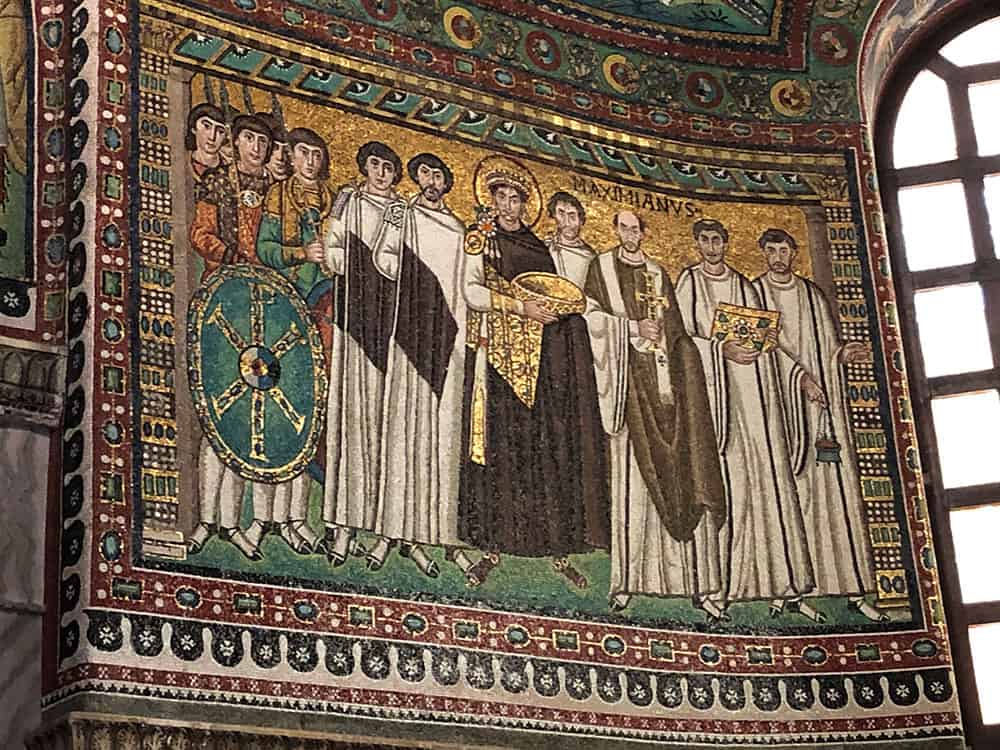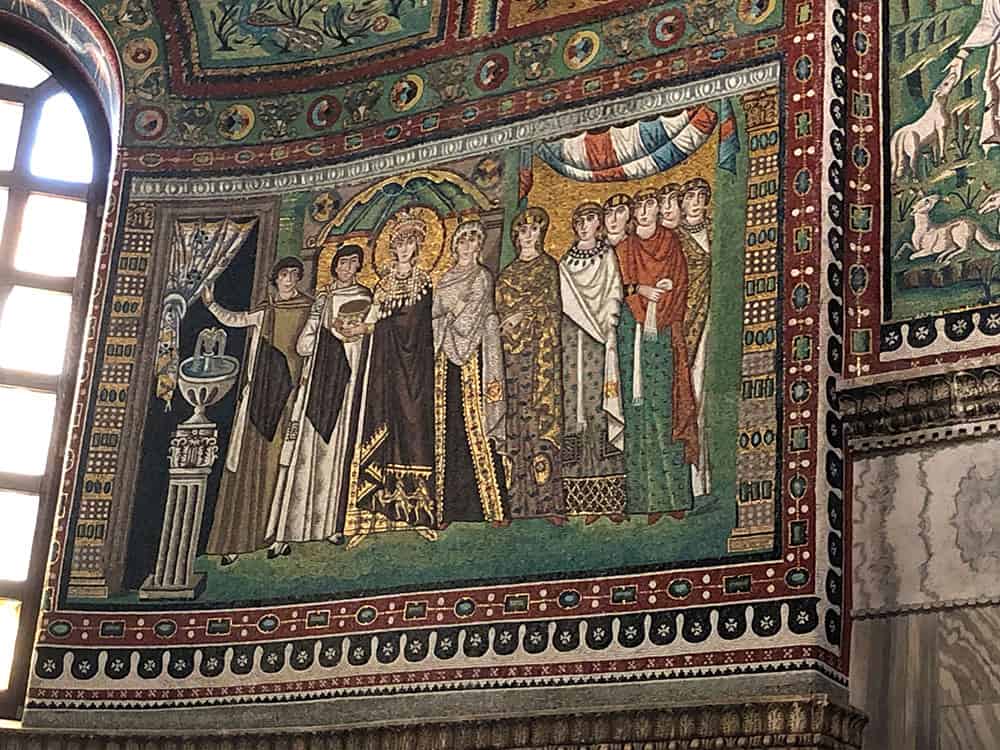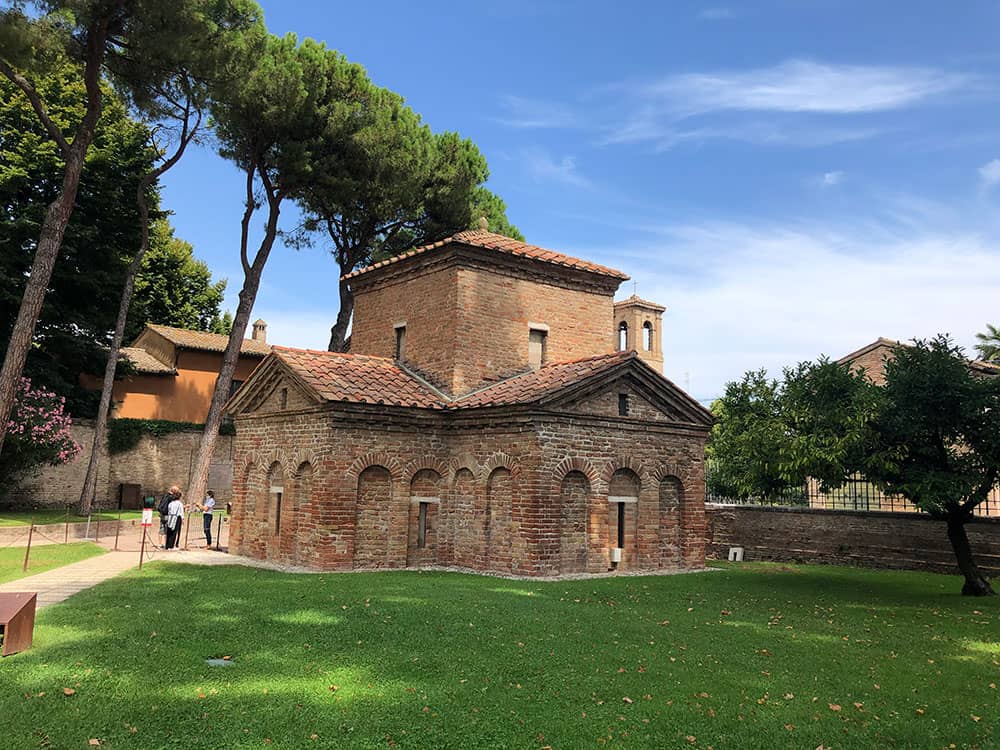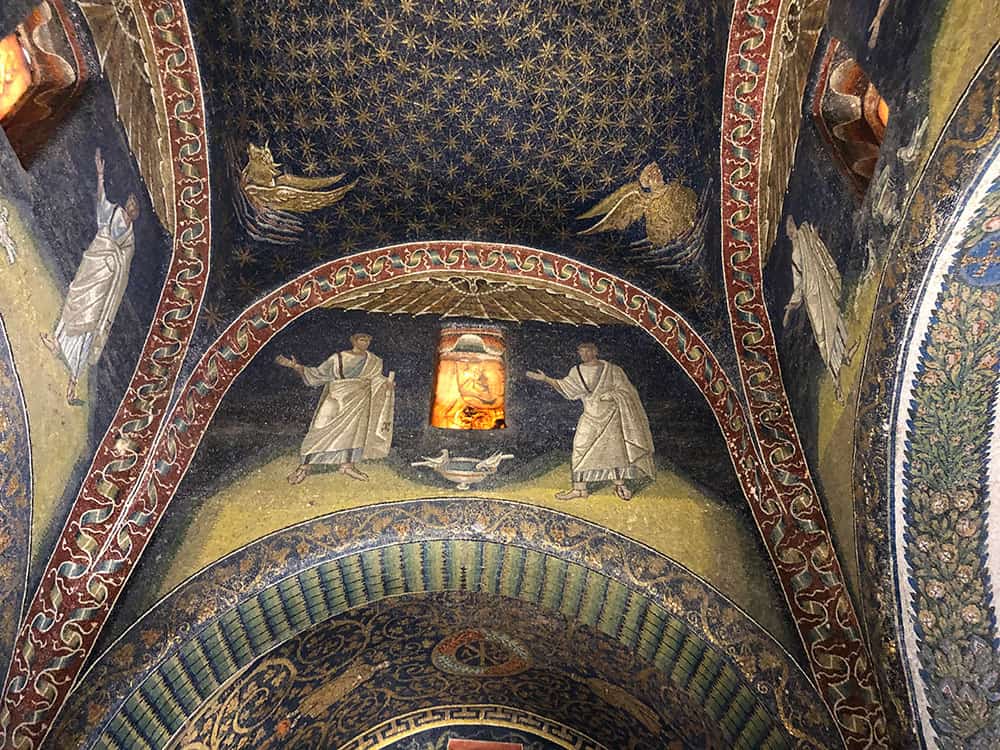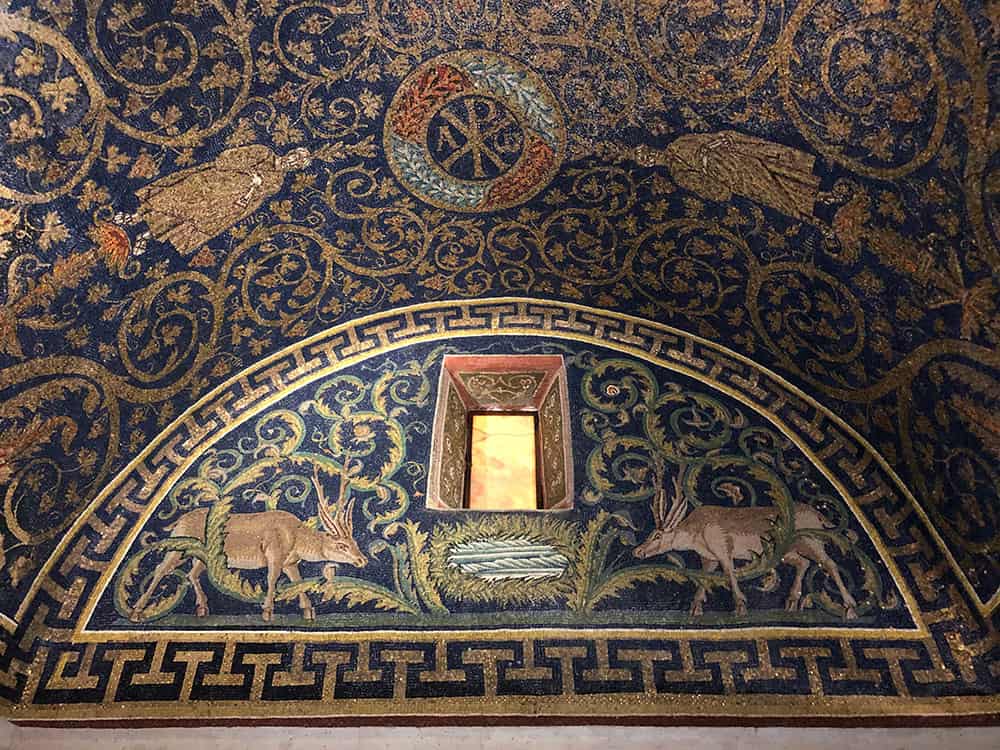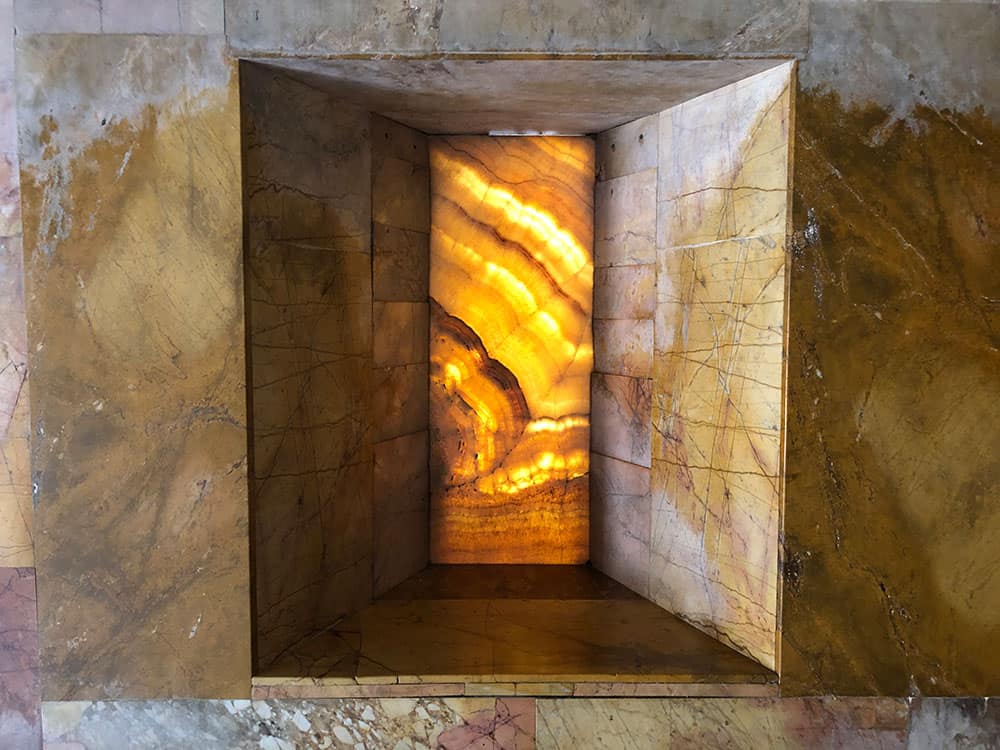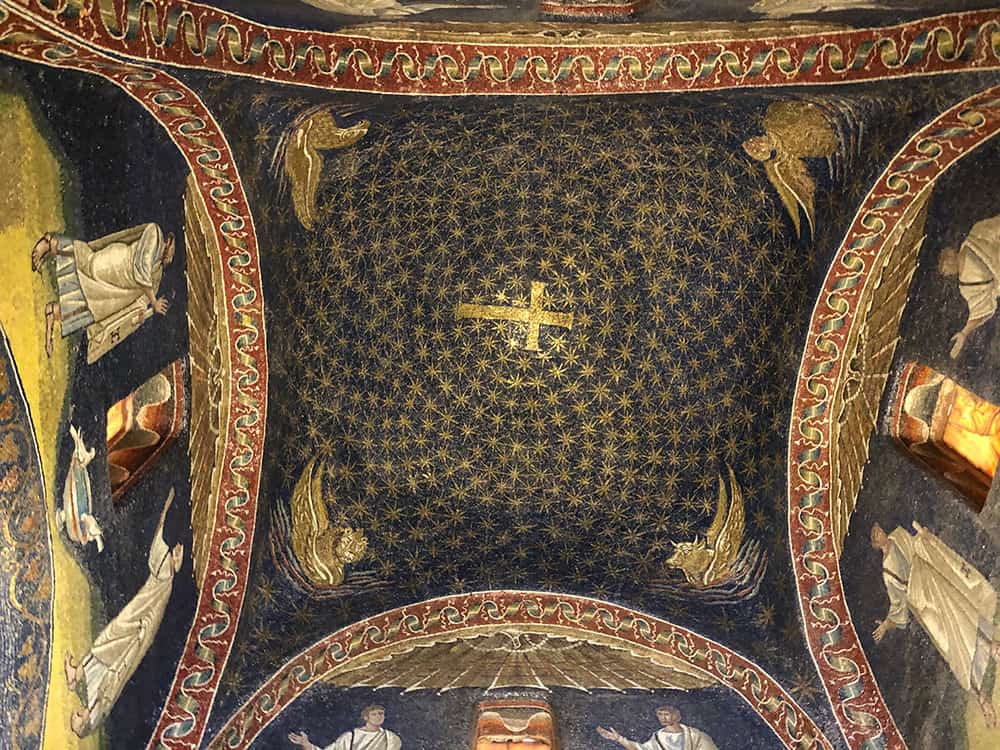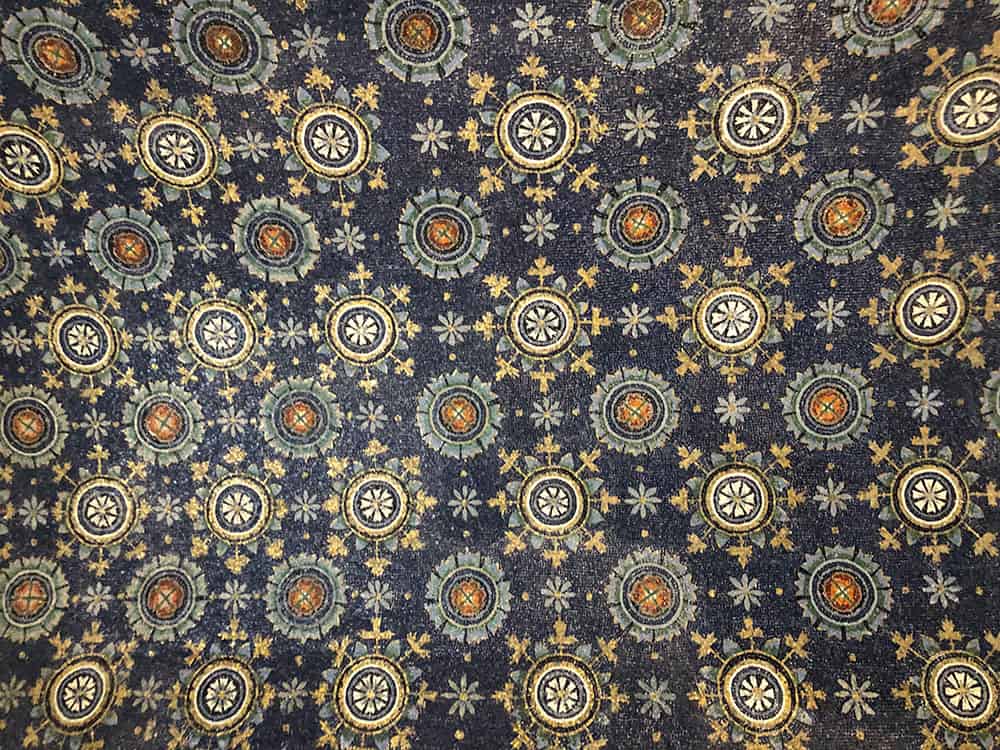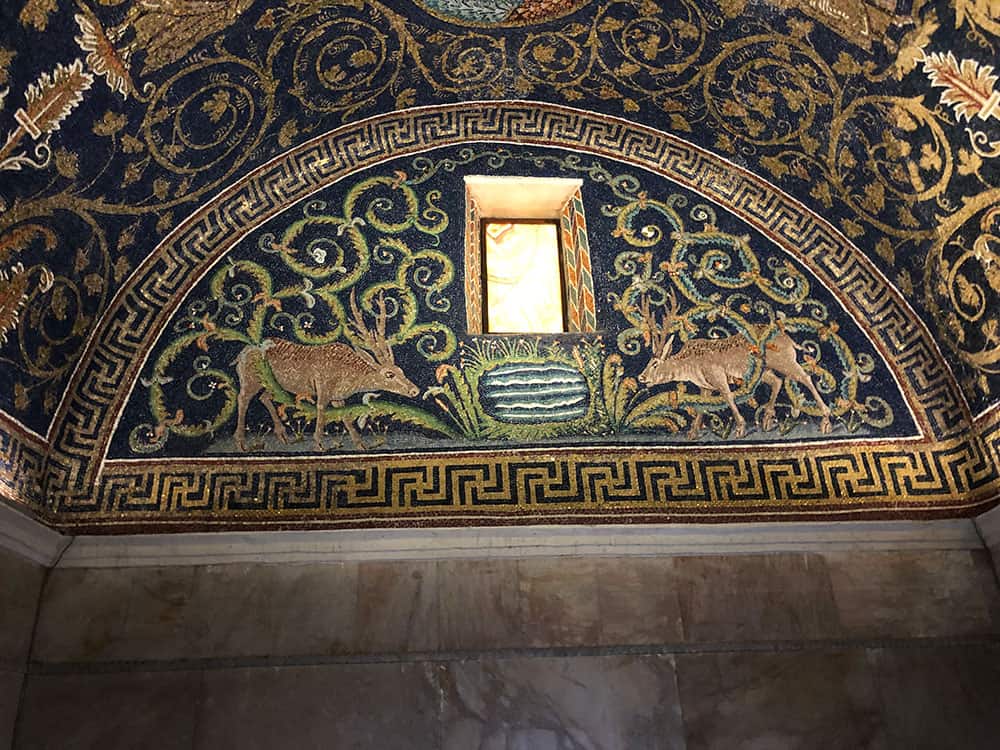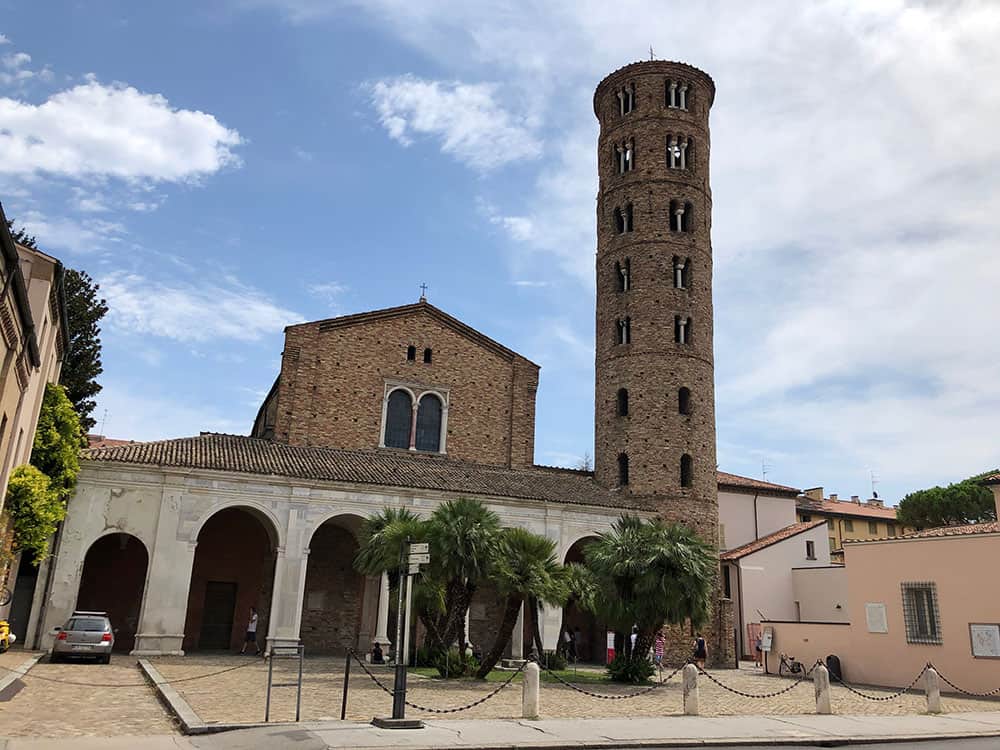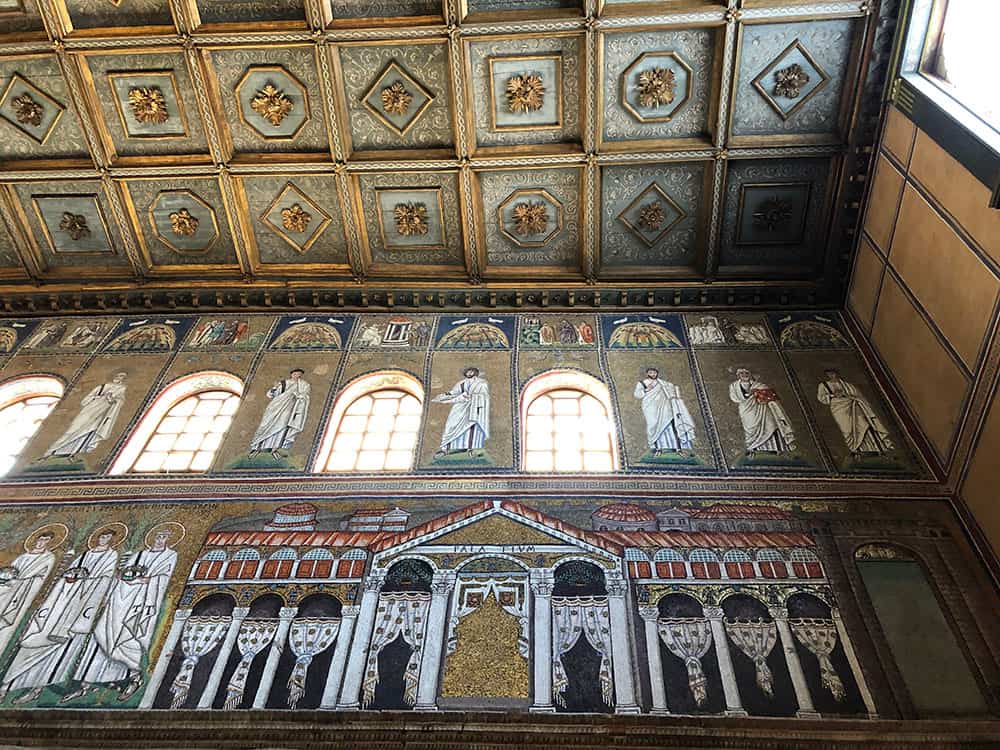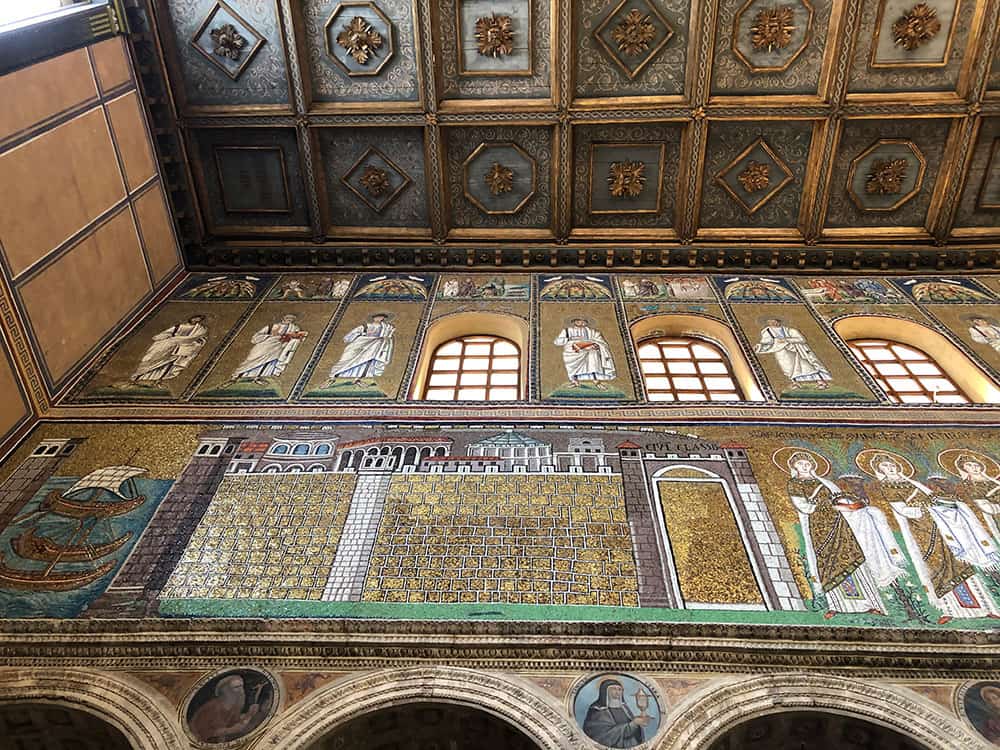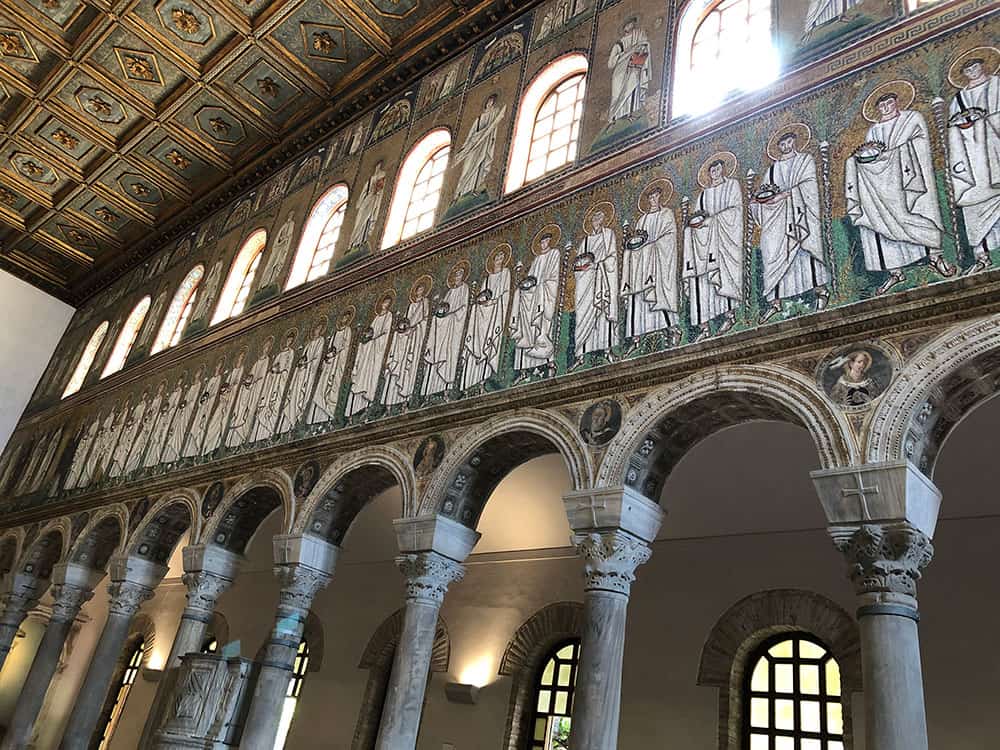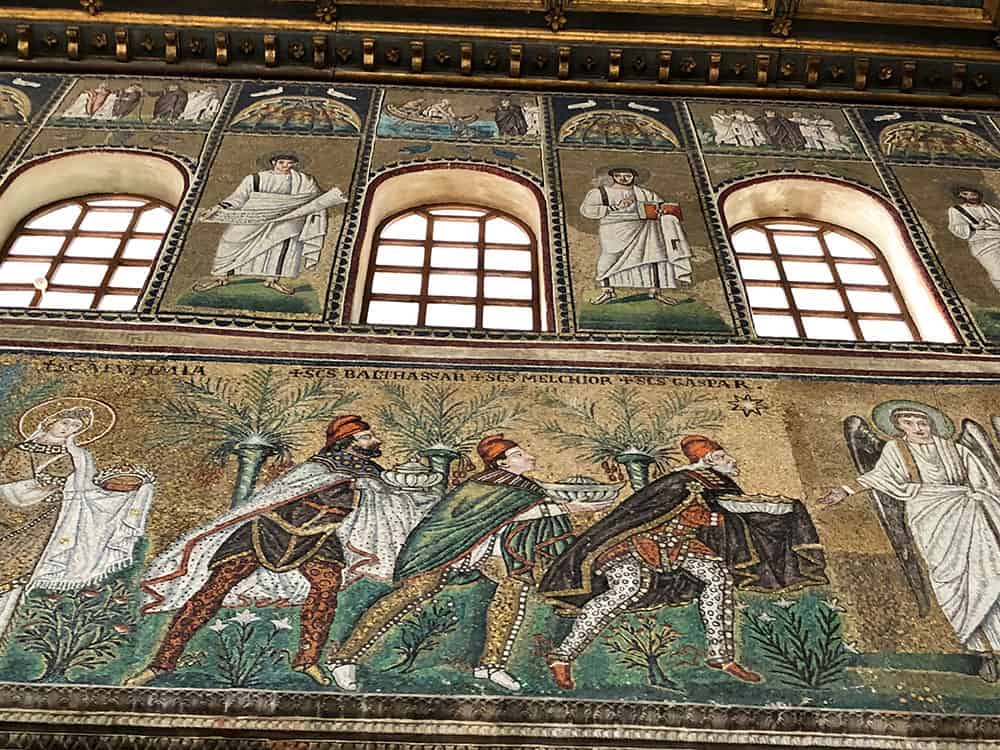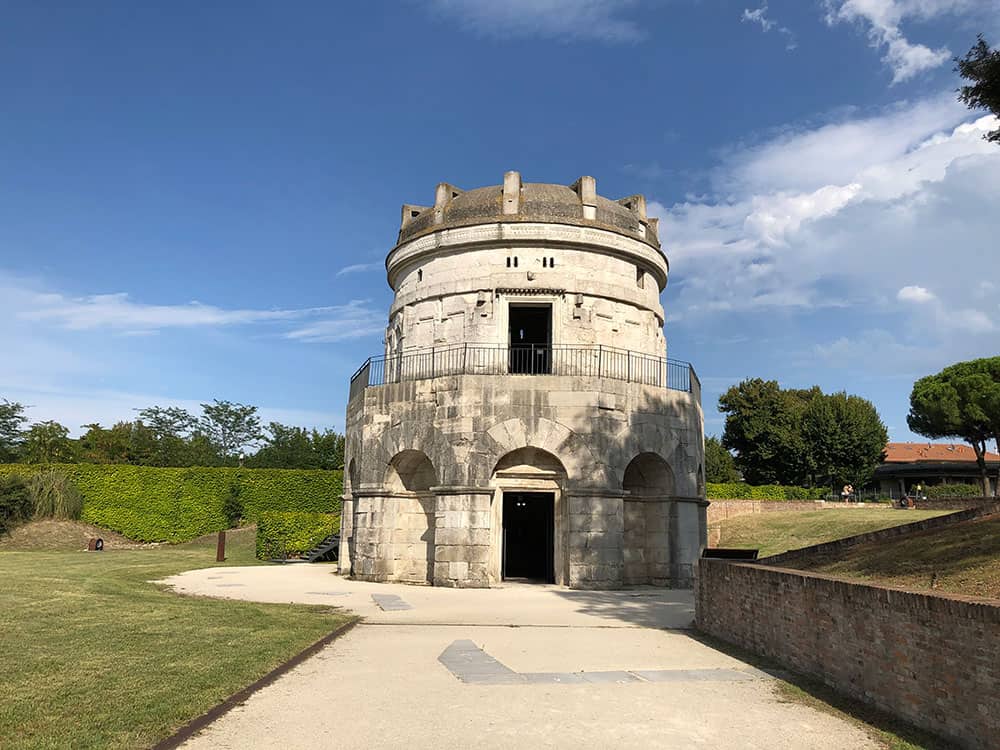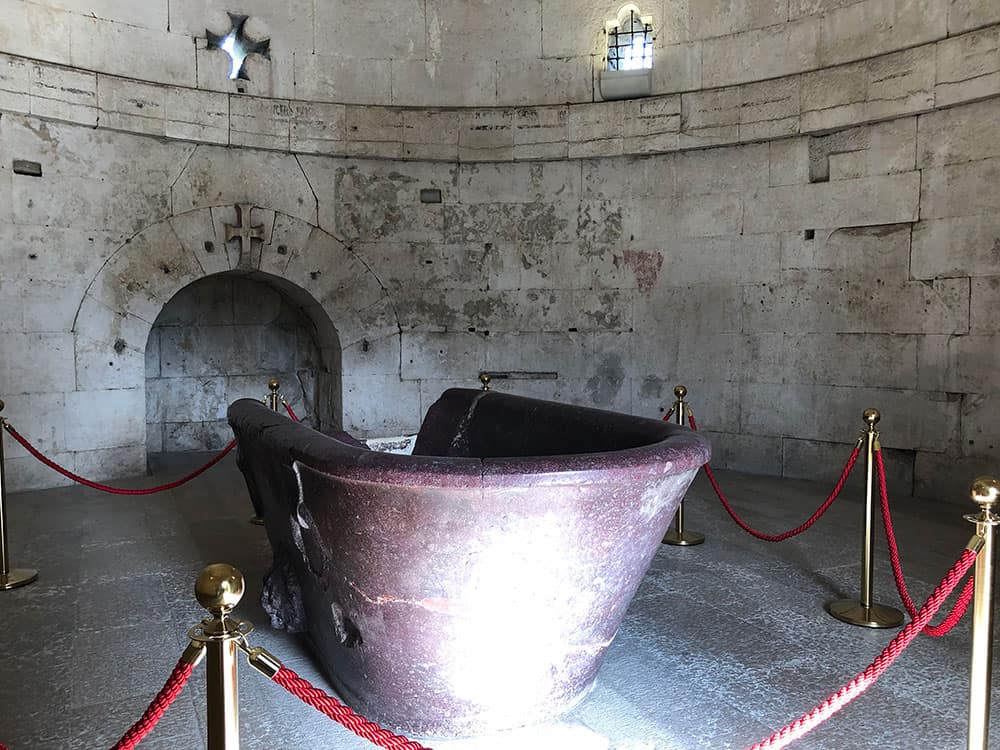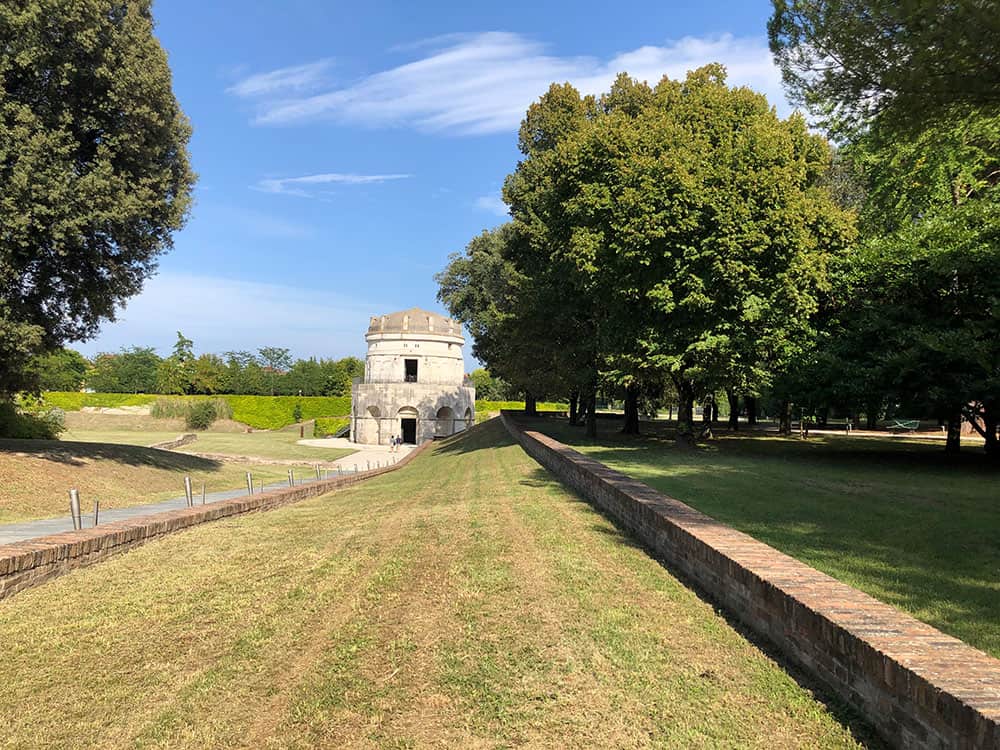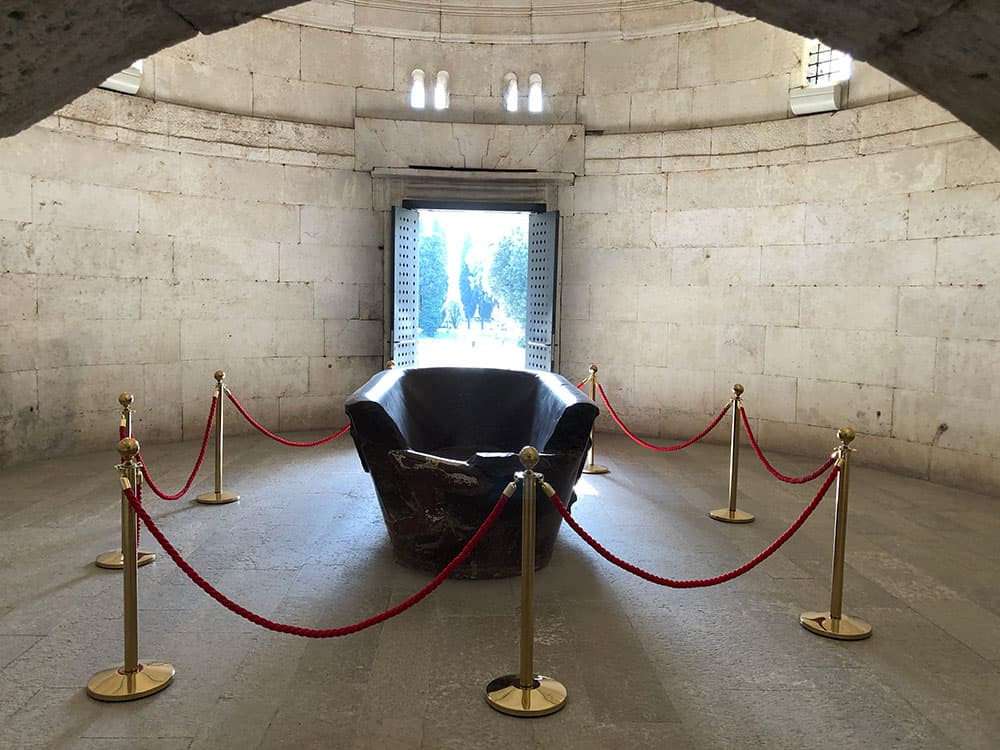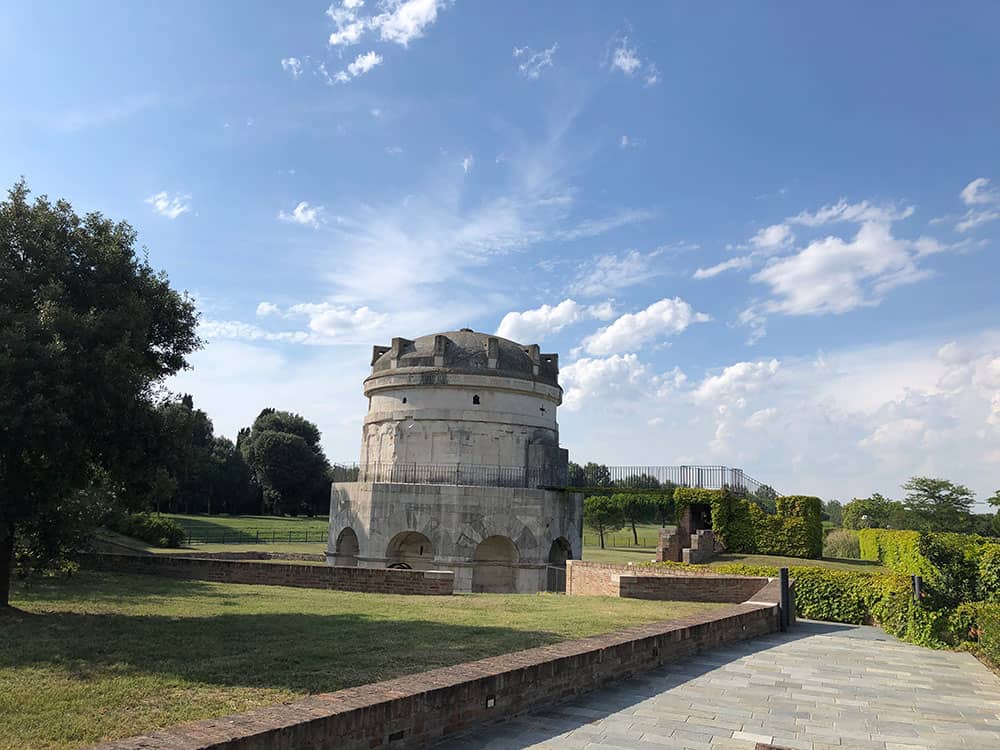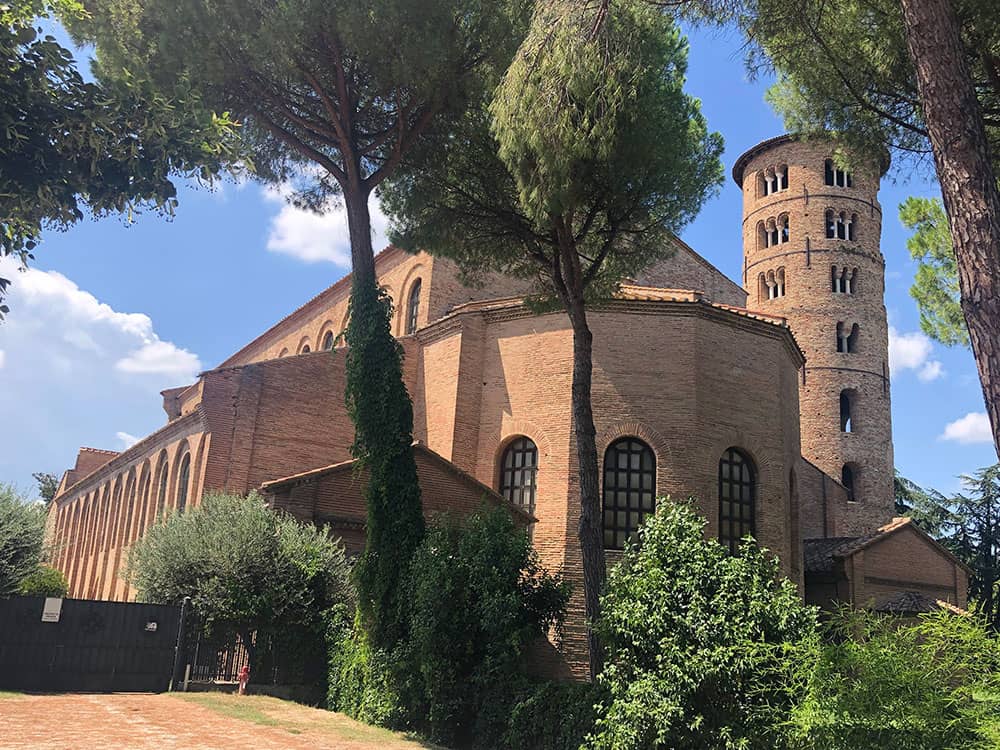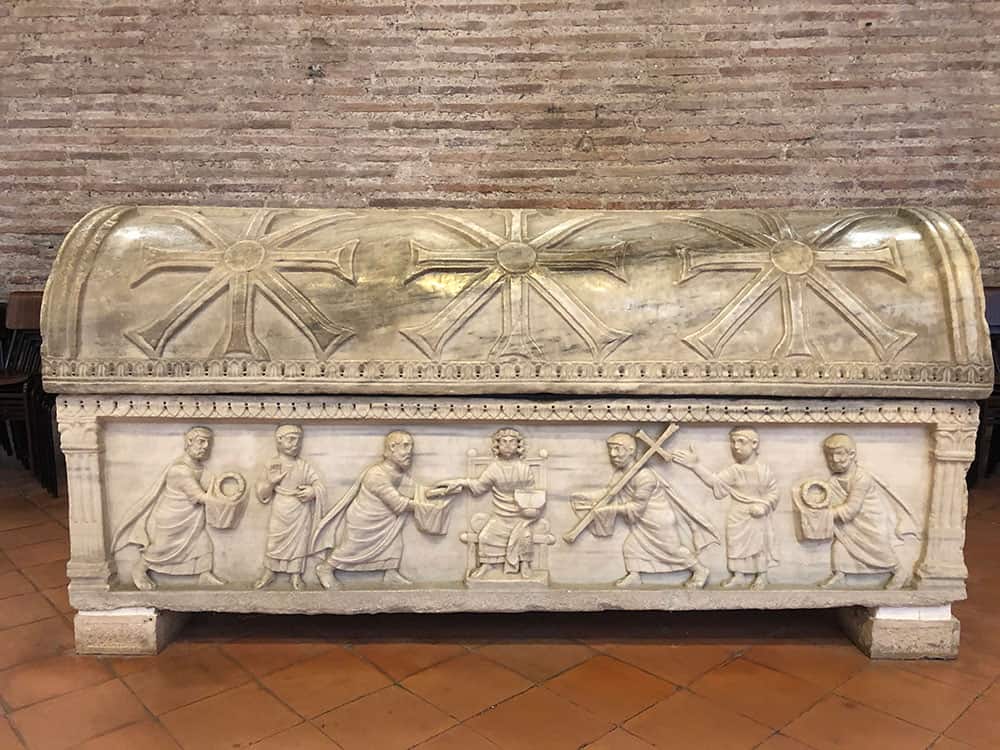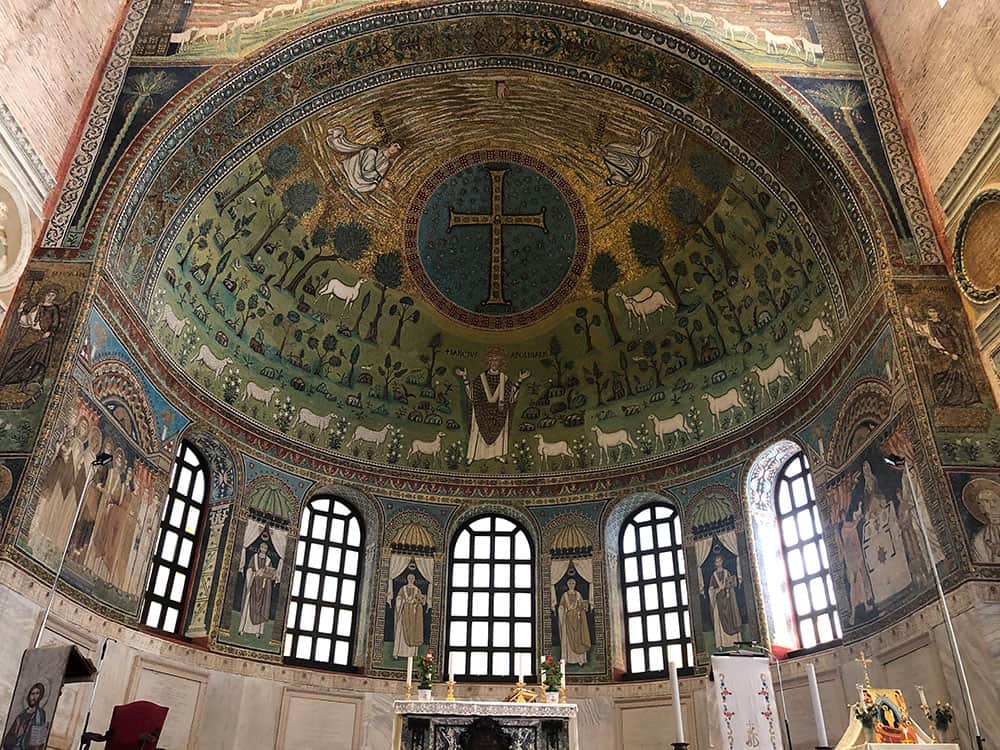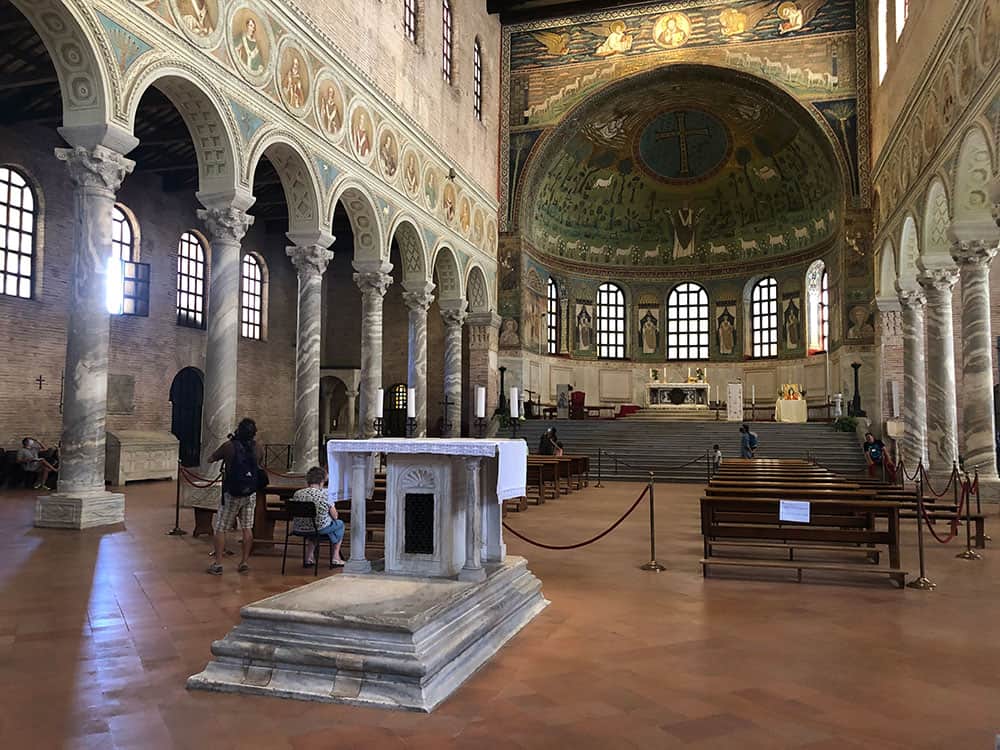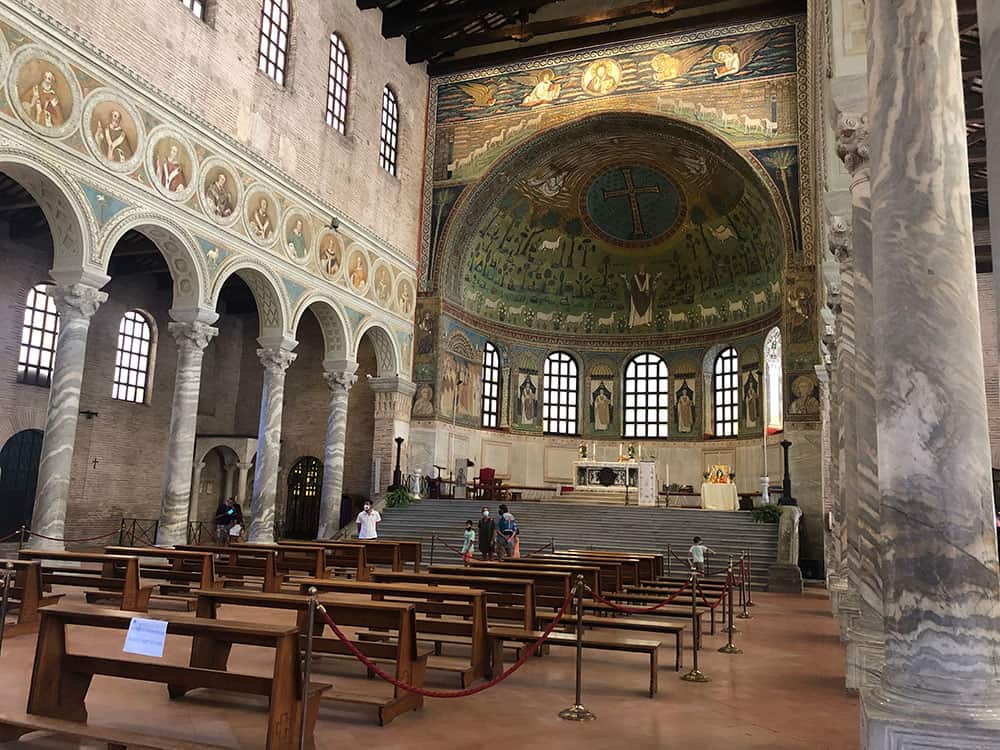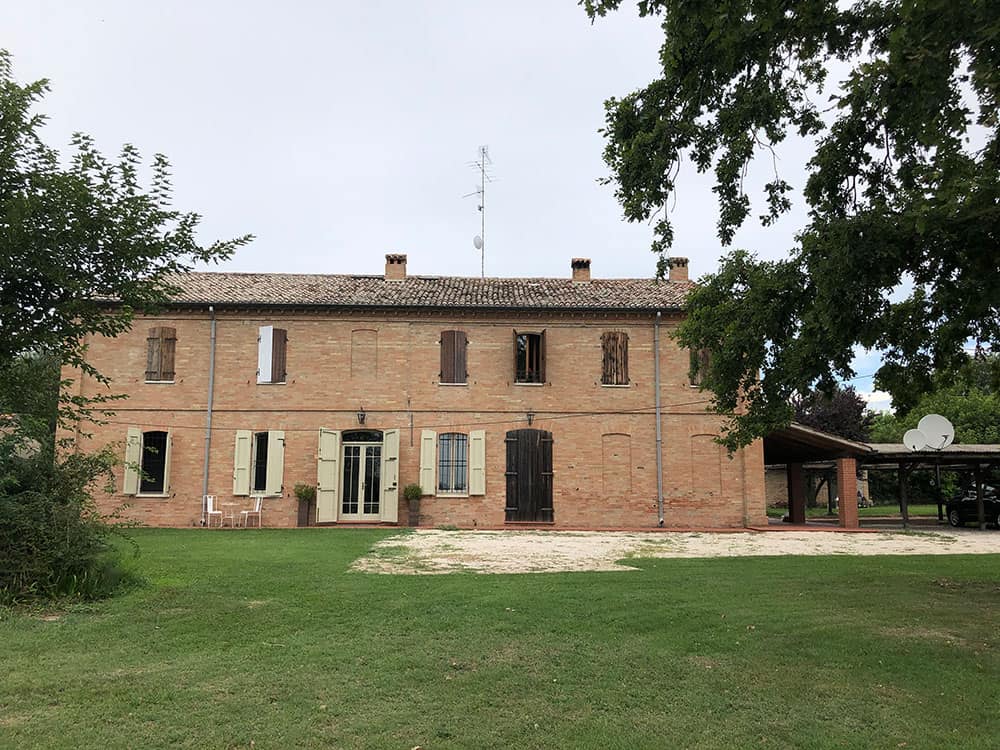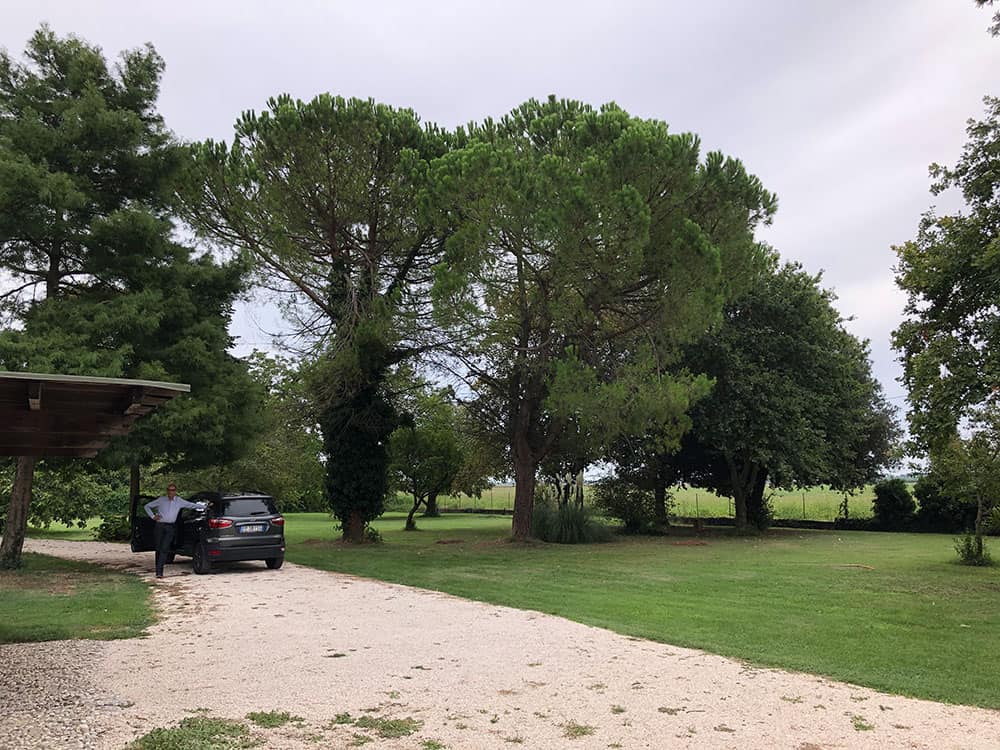Last summer (2020) during the short window between one lockdown and the other, Nazim and I have planned a short but intense tour of some cities of art to put aside, as good ants would do, a lot of material to offer you in case we were again unable to make our beloved excursions. And we were right!!!
One of the destinations we considered mandatory for our short holiday was the city of Ravenna in Emilia Romagna. Today, while I was getting ready to write the article about this wonderful town, I looked at the photos and I wondered how the hell I can succeed in mentioning in a few lines both everything we have seen and what we failed to visit because of time lack.
As often happens in Italy, the description of each site would be sufficient for an entire article but we will let you discover the part of the articulated historical treasure of this town on your own. We just will share with you our path and our impressions without depriving you of the pleasure of following your very personal track.
What is indisputable, however, is that Ravenna boasts the most beautiful mosaics in the world: we could define it as the widespread museum of Byzantine aesthetics in Italy.
With time, the city has ruled the Capital role three times: of the Western Roman Empire(402-476), of the Kingdom of the Ostrogoths(493-553), and the Byzantine Exarchate(584-751). For the vestiges of this luminous past, the complex of the first Christian monuments of Ravenna has been included, since 1996, in the list of Italian World Heritage Sites by UNESCO.
Just to make a reminder, the Italian UNESCO sites are 55, a handful less than China which, by the way, is 31 times the size of Italy!!!!
Okay, I immediately stop this nationalist excess and I begin to tell you something about this extraordinary city….
Ravenna today is located 8 km from the sea but during the Romans era it was equipped with a very large port called Classe that controlled the entire eastern Mediterranean Sea; here you can visit the Basilica of Sant’Appollinare in Classe, one of the 5 sites already mentioned before.
Ravenna in 402 became the capital of the Western Roman Empire as Rome, weakened by the incursions of the Barbarian populations, was no more the center of power.
The capital Ravenna has three protagonists: Odoacer, Theodoric, and Justinian and the magnificent constructions they left us are precious testimonies of their history even if from the documents of the time, we know that Ravenna was enriched with many religious buildings between the VI and VII centuries and the Late Middle Ages.
What we can see today is only a small part of what was built during that period. And believe me… it’s still a lot.
All sites are within walking distance (apart from Sant’Appollinare in Classe that is located 5 km from the city) but we strongly advise you to book the entrances because, due to Covid-19, the entrances to museums are limited).
We start our journey from the Basilica di San Vitale, one of the high light of Ravenna mosaic art.
This octagonal-shaped temple is among the most important monuments of early Christian art in Italy. Begun in 526 and it underwent construction during the following twenty years, then during the reign of Emperor Justinian, at the same time as the Church of Santa Sofia in Constantinople (today Istanbul). Dedicated to San Vitale, a martyr of the first centuries of Christianity, the imposing building has an interior (floor and walls) covered by very rich mosaics and precious marbles that shine with an extraordinary light.
The most famous mosaics are the ones that portrait Justinian and his wife Theodora, emperors of Bisanzio (now Istanbul), beautiful, imposing, and richly dressed: it is funny though to think that their iconic image is a bit of a fake. Probably the couple never visited the city of Ravenna running the empire from afar.
In the Justinian era, the mosaic technique reached very high levels and represented a real philosophy in the form of art. All the Byzantine mosaics as, on the other hand, the icons, followed precise iconographic dictates. The figures became symbols and this is demonstrated by their rigidity, their severity: poses, clothes, proportions, expressions portrayed by the Byzantine artist, as equally happened during the Egyptian era, following a codified style, totally excluding the possibility of invention.
On the ground you can see a series of concentric circles with arrows: it is a labyrinth, as you can find in many Christian churches. It symbolizes the intricate path that humankind has to search from sin towards purification.(If you want to know more about the meaning of the labyrinth go and see our video on the Labirinto della Masone by Franco Maria Ricci).
From the sumptuousness of San Vitale, you can move on to a close-by intimate and perfect jewel: the Mausoleum of Galla Placidia.
Built on the miniature model of Hagia Sophia in Istanbul, as the funeral building of its owner, the empress Galla Placidia, the mausoleum has miraculously arrived at the present day intact and it’s a place of moving beauty.
The brick building has a very simple external appearance but as soon as you cross the entrance you are greeted by the cycle of the oldest mosaics in the city and the lapis lazuli blue sky of the vault, decorated with pure gold shining stars.
The light inside the room is filtered by the warm transparency of translucent sheets of alabaster. A real treat that gives an absolute softness to everything on which the eyes rest! A curiosity: The splendid dome with its starry sky seems to have been a source of inspiration for the composer Cole Porter, during his honeymoon, for the creation of the well-known song Night and Day.
But your indigestion of mosaics is far from being over because we take you to Sant’Appollinare Nuovo (not to be confused with Sant’Appollinare in Classe) which is home to the largest cycle of mosaics in the world!!
The church is located in the historic center of the city and the entrance is set back from the road axis; once you enter the church you are immediately struck by the vastness of space and by the grandeur of its decoration: the side walls are entirely covered with sparkling tiles, arranged at different inclinations from each other, to make the light vibrate.
The building was born as a Palatine Church of Arian worship: Theodoric built it at the beginning of the 6th century, next to his palace but a few years after its construction, with the conquest of Ravenna by the Byzantines, it became the property of the Catholic Church. In fact, we can see the cancellation of the figure of the Emperor and other characters, covered with white drapes, that occurred when the basilica passed from the Arian cult (for which it was built) to the Catholic one.
The walls of the central nave are divided into three distinct bands of mosaics: the highest bundle tells the life of Christ, the central one Saints, and Prophets, and while the lower one portrays the famous Palazzo di Teodorico.
A place that also struck me very much was the mausoleum of Theodoric: Nazim, tired by the endless city-tour, refused to follow me and I entered the site practically alone. The day was drawing to a close and a warm light embraced the surrounding countryside.
The structure that stands to the visitors at the end of a gently sloping road, appears like a thick and imposing two-story monoblock with a decagonal shape, so severely modulated that reminds certain chapels from the early 1900s. The roof, made with a single block of stone, hangs over the building surrounded by greenery and silence, creating a millennial atmosphere inside.
According to the legend, the red porphyry basin located on the upper floor of the Mausoleum (God knows how they carried it upstairs!!!) is the same in which the Barbarian Emperor died. Teodorico was afraid of lightning due to a dark prophecy that saw him dead because of a lightning bolt. On a stormy day, he took refuge in his mausoleum where he ended up struck by a lightning (that by the way caused the crack in the large monolithic dome which is still visible today) just as he was taking a bath.
The legend though becomes even more fantastic: from the open cross-shaped crack in the roof of the Mausoleum, a black horse would then arrive, grab the Emperor and throw him into a volcano the Etna, the Volcano or Stromboli…who knows?!
This is just one of the fantastic tales that developed around the death of this barbarian king who ruled Italy for 33 years bringing tolerance, peace and its solitary mausoleum leaves the visitor with a deep sense of mysterious and monumental grandeur … don’t miss it!
There would be many other sites to talk about but we want to leave you with one last suggestion: the Basilica of Sant’Appollinare in Classe of which we mentioned at the beginning of the article and which we left for last precisely because it is on our route away from Ravenna. The name “in Classe” (from the Latin, classic meaning “fleet”) derives from the name of the ancient Roman city which was built here together with the port built-in 27 BC. by Octavian Augustus to welcome the imperial naval army.
The Basilica was built in 533 a.C. to house the remains of Apollinare, patron saint of the city, it is the largest example of an early Christian basilica known today.
Sant’Appollinare was the first bishop of the local community: one of the few historical sources we have links the saint to the apostle Peter who, after having instructed him on the Gospel, would have sent him from Antioch (Siria) to evangelize Ravenna.
He preached between the second and third centuries and after many missionary trips throughout Emilia Romagna, he would have died as a result of the persecutions and torments suffered. The walls are devoid of decorative elements, except the apse area, covered with splendid mosaics made in different periods and by different workers: the most famous image is undoubtedly in the apsidal basin, Transfiguration of Jesus Christ (535 – 549). In the scene, Jesus is symbolically represented through the jeweled cross. Below, in a green meadow, three sheep, two on the right and one on the left with the muzzle facing the cross symbolize the three apostles who attended the event (Peter, James, and John). Below, in the center, the image of Saint Apollinaris in prayer among twelve sheep, which according to some scholars are the apostles while for others they are the faithful.
Below the presbytery, there is a crypt built between the 9th and 10th centuries, inside which there is an urn, in Greek marble, wherein 1173 the remains of Saint Apollinaris were placed, now kept within the main altar.
As we have said several times, the city still offers much more starting from the Aciebishop’s Museum, the beautiful church of San Francesco with its crypt where goldfish wallow happy and Dante’s tomb (who was there in exile when he died) that everyone thinks is in Florence. Not to mention the rationalist architecture that stands out against the blue skies with its essential shapes and much, much more.
Let me give you two more tips: if you like street food do not leave Ravenna without trying la Piadina Romagnola … it’s not food, it’s an institution! The perfect way to refuel quickly and with great taste.
Last tip: if you have a car try the stay at the AirB&B where we stayed “A casa di Leo” (Leo is the one in the picture, a super loving Labrador). A very pleasant apartment on the ground floor of a rural house, overlooking a beautiful garden in the middle of the countryside. Very kind hosts who will let you pluck from the tree (if you are in the appropriate season) some delicious figs !!!! In the evening we dined by candlelight in the garden in the company of an old friend from Milan who moved to Ravenna many years ago accompanied by the chirping of cicadas …. a marvel!
Nazim said: why on earth did we wait so long to visit Ravenna!!!!!!!
Info: Cumulative tickets are available at a reasonable price. Here is a useful link
Betti
[socialWarfare]

